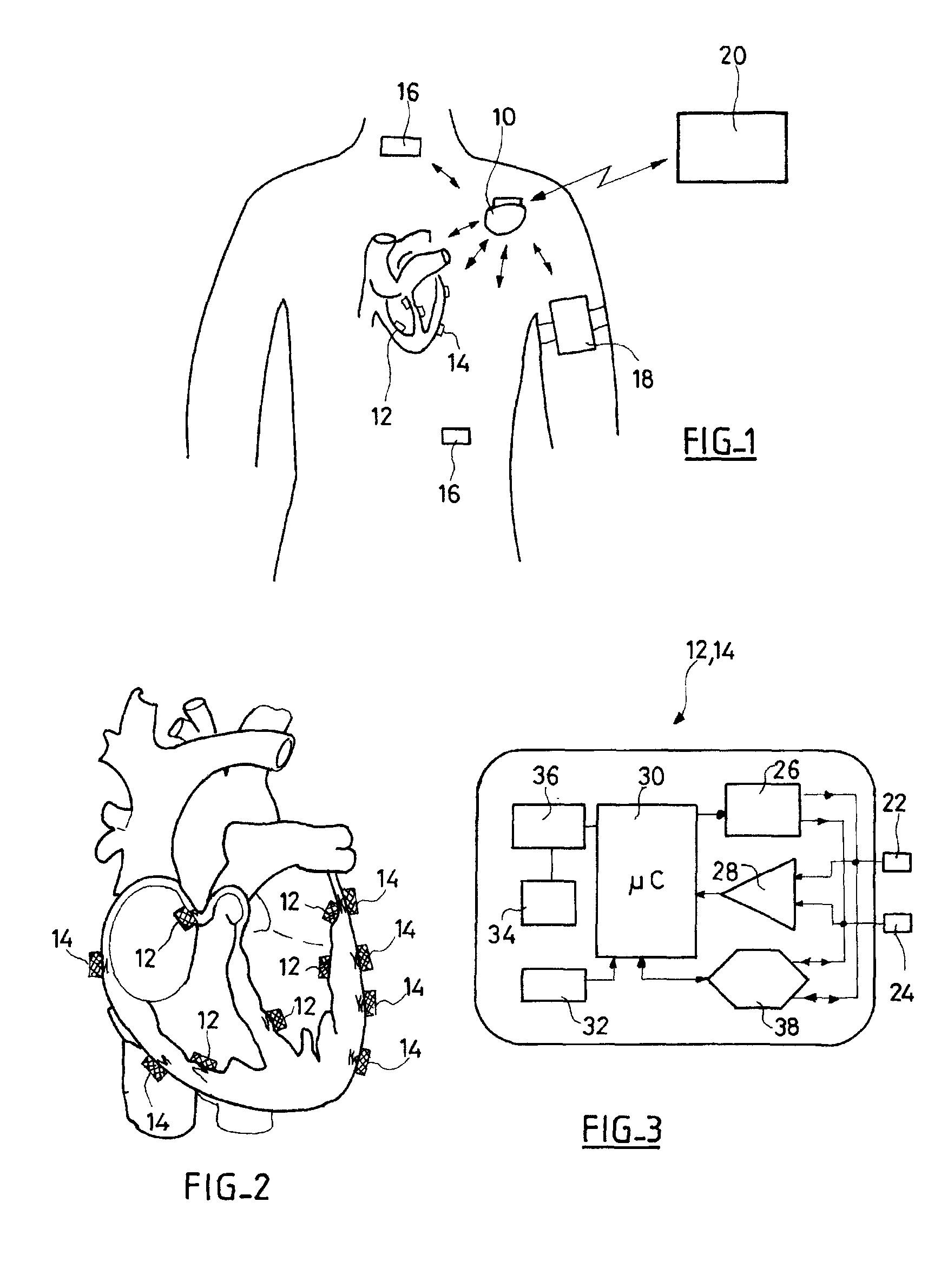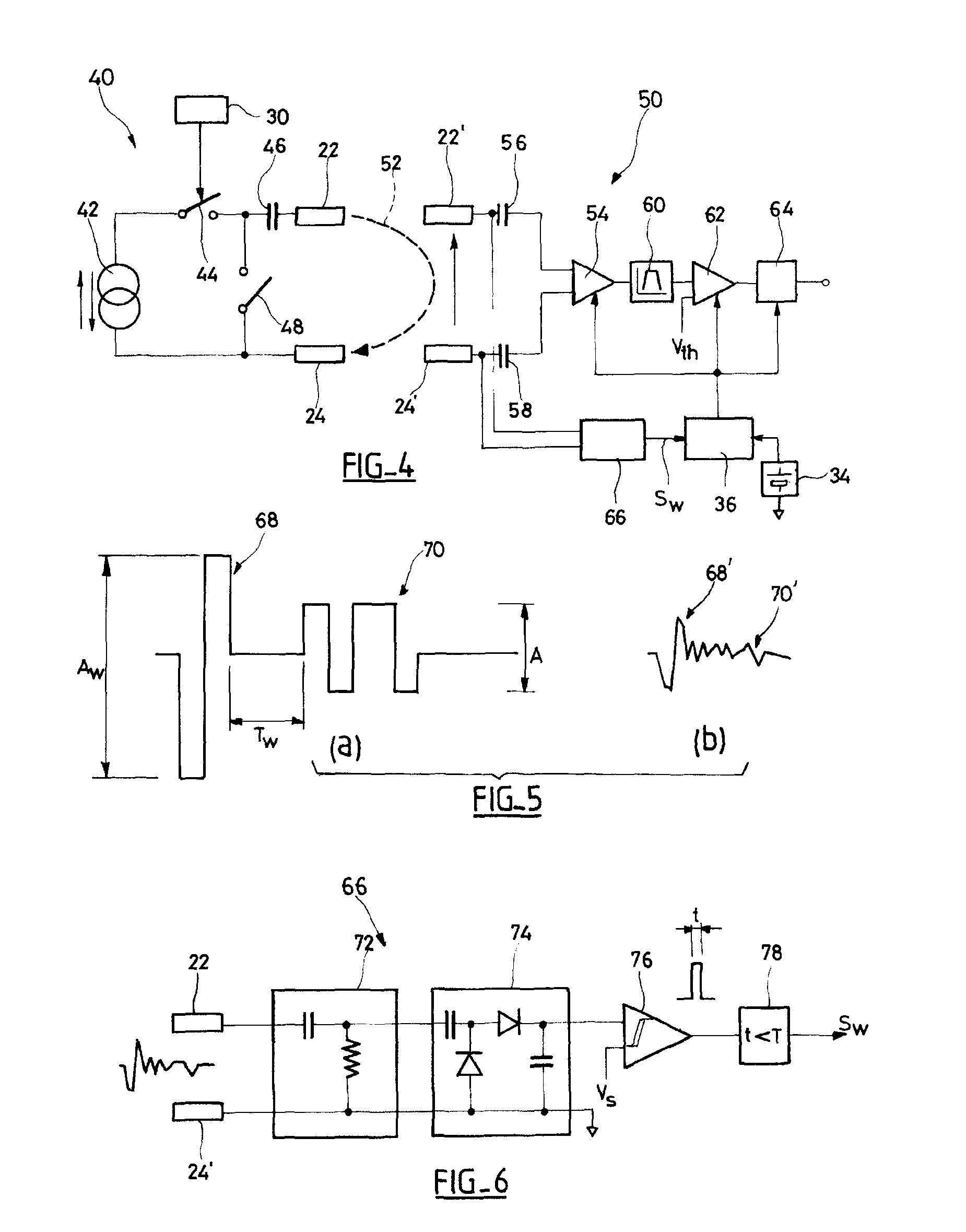System, methods and apparatus for waking an autonomous active implantable medical device communicating by pulses transmitted through the interstitial tissues of the body
a technology of implantable medical devices and pulses, applied in the field of medical devices, can solve the problems of requiring a requiring relatively high transmission rate, and requiring relatively high transmission power, and achieve the effect of low latency in response and high responsiveness of leadless capsules
- Summary
- Abstract
- Description
- Claims
- Application Information
AI Technical Summary
Benefits of technology
Problems solved by technology
Method used
Image
Examples
first embodiment
[0071]The first embodiment, illustrated in FIGS. 5 and 6, is optimized for communication channels with low attenuation and a good signal / noise ratio. “Low attenuation” should be understood to mean an attenuation between ×10 and ×100, or between 20 to 40 dB. In this case, a predetermined characteristic pulse pattern, such as that shown in FIG. 5a, including a (biphasic) pulse 68 of high amplitude Aw, is generated, forming a wake-up signal that is used to trigger the wake-up, followed by a succession of (also biphasic) pulses 70 of smaller amplitude A, for the HBC signals to be delivered to the receiver device.
[0072]A biphasic pulse of ±1.5 V (i.e., a peak-to-peak amplitude Aw=3 V) can for example be generated at the transmitter device side, which provides for an attenuation of between 20 and 40 dB, and a pulse having an amplitude between about ±150 mV and ±15 mV, at the receiver device side.
[0073]The received signal corresponding to the transmitted signal is comparable to that illust...
second embodiment
[0093]In this second embodiment, the detection quality of the wake-up signal depends on the duration of a bit and not just of the signal / noise ratio. The number of pulses encoding a bit (n bits to encode a ‘0’ and 2n bits to encode a ‘1’) can thus be increased and increases with the time constant (integration time) of the envelope detector to increase the quality of reception—with a corresponding reduction in the communication flow.
[0094]Again, the circuits of the wake-up circuit of the second embodiment are passive circuits, with the exception of the comparators 92 and 98, whose energy consumption is, however, extremely low, as explained above in connection with the first embodiment.
PUM
 Login to View More
Login to View More Abstract
Description
Claims
Application Information
 Login to View More
Login to View More - R&D
- Intellectual Property
- Life Sciences
- Materials
- Tech Scout
- Unparalleled Data Quality
- Higher Quality Content
- 60% Fewer Hallucinations
Browse by: Latest US Patents, China's latest patents, Technical Efficacy Thesaurus, Application Domain, Technology Topic, Popular Technical Reports.
© 2025 PatSnap. All rights reserved.Legal|Privacy policy|Modern Slavery Act Transparency Statement|Sitemap|About US| Contact US: help@patsnap.com



